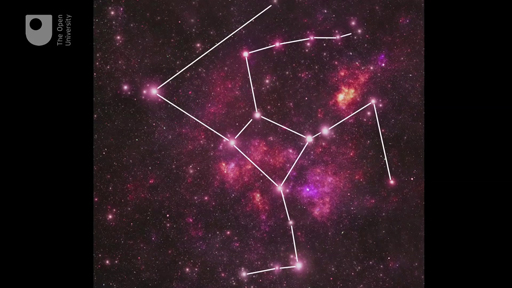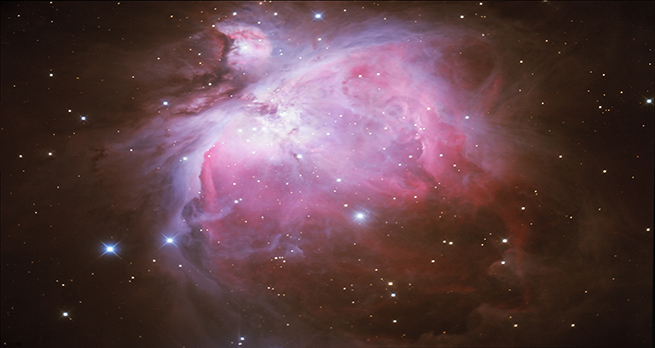1.2.1 Patterns in the sky

A constellation is a group of stars that appears to form a picture or pattern. Orion is a constellation – the word constellation comes from the Latin, ‘con’ meaning ‘with’ and ‘stella’ meaning ‘star’. There are 88 named constellations that can be seen in the night sky.
Some of them are only visible in the northern hemisphere, like the Plough (which is part of the Great Bear, or Ursa Major), while others are only visible in the southern hemisphere, for example, the Southern Cross. Although there are billions of stars in the sky, only a small number are used to make up the constellation shapes. They are the brightest ones that can be seen easily by the naked eye.
We perceive the stars in a constellation to be close to each other, and the same distance from the Earth. Remember, though, that we are seeing them as a two-dimensional pattern on the sky. In reality, the stars that make up a constellation are often at different distances from Earth. If we were sitting on a different planet orbiting around a different star from the Sun, the constellations are likely to look completely different!
In the next section, you’ll discover what Orion looks like in 3D.
